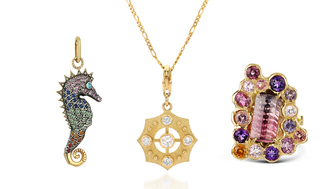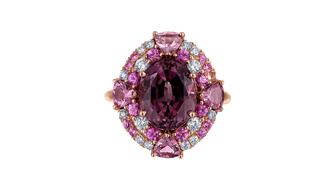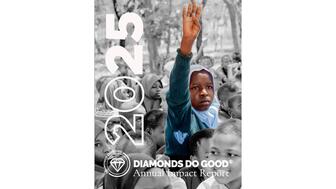As the shopping mall model evolves and online retail grows, Smith shares his predictions for the future of physical stores.
Micro-Influencers Are the Next Big Thing, Says Report
A recent survey by Launchmetrics survey showed influencers with fewer than 100,000 followers are a favorite among marketers.
“With the opportunity of increased sales, awareness and brand loyalty, it’s no surprise that the number of professionals who claim to work with influencers continues to grow—80 percent this year alone,” Launchmetrics CEO Michael Jaïs said in the report.
Brands are looking to connect with younger, tech-friendly customers and have been reaching out in greater numbers to influencers to act as middle men, he said.
And it seems to be paying off—nearly 76 percent of survey respondents said that collaborating with influencers led to better sales.
Here are some key takeaways from the fifth annual The State of Influencer Marketing report.
Prioritize Authenticity
More than 45 percent of professionals surveyed are turning to micro-influencers, or influencers with 10,000 to 100,000 followers, to promote their products.
Around 22 percent said micro- and mid-tier influencers (101,000 to 500,000 followers) produce more authentic content.
RELATED CONTENT: How Can I Find Local Influencers?
Respondents also noted that micro-influencers deliver a more targeted message and exhibit a better connection with the target audience. On top of that, they tend to be more cost-effective.
In contrast, those classified as all-star influencers (more than 2 million followers) dropped in popularity and fell out of favor as opinion leaders.
Pay Attention to Gen Z
Millennials and Generation Z are expected to represent more than 40 percent of the overall luxury goods market by 2025, according to a Deloitte survey cited in the report.
While nearly 78 percent of respondents said millennials (ages 24 to 38) were their target audience, a little less than 7 percent were focused on Gen Z (ages 6 to 23).
RELATED CONTENT: 5 Things to Know About Gen Z
Companies overall are paying less attention to Generation X (ages 39 to 53), with interest dipping by 4 percent.
Instagram Is the Place to Be
Instagram is the most relevant social media platform for influencer marketing, according to 46 percent of respondents, up from 36 percent last year.
Facebook landed in second place at around 16 percent, followed by YouTube at 14 percent. Twitter, LinkedIn, Snapchat and Pinterest were all in the single-digit percentages.
Breaking it down by format, 40 percent of respondents found that images showing up in a user’s feed were the most effective, followed by Instagram Stories at 32 percent.
The report expects these two features to continue to grow in popularity as Instagram rolls out Checkout, an in-app shopping feature.
Influencer Marketing Budgets Are Growing
Nearly 50 percent of professionals surveyed said they spent more than $10,000 per year in influencer campaigns.
More than 60 percent of respondents said their marketing budgets will continue to expand to finance even more campaigns.
“The increase in budgets, resources and effort dedicated to influencer marketing are justified by the results brands have been obtaining over the last few years,” said Launchmetrics CEO Jaïs.
By industry, 22 percent of luxury professionals claimed to spend more than $100,000 per year on influencer marketing, compared with around 9 percent in fashion and 8 percent in beauty.
A majority of the fashion, luxury and cosmetics professionals surveyed pay influencers for their work, with 21 percent answering “always” and 30 percent answering “frequently”.
Paying influencers is becoming increasingly vital, with nearly 70 percent of influencers surveyed listing monetary compensation as their top motivation.
Influencers were most interested in monetary compensation and producing valuable content, with exposure and free merchandise falling farther down the list.
Measuring ROI Is a Challenge
Survey respondents said the main challenge they face with influencer marketing campaigns is the inability to measure the campaign performance.
Not knowing which key performance indicators to look for, or how to measure them, also contributes to the fourth-place concern: ROI justification, or backing up the amount being spent on influencer marketing to upper management.
The indicators to pinpoint can vary by campaign, said Cristiana Monfardini, Fendi’s chief communication officer.
“With the ‘F Is For … Fendi’ [campaign] we measure the success of our initiatives through online and offline engagement with our audience. All our content is 100 percent organic to stay true to our community,” she said.
The report recommended using technology and software instead of manual methods to assign a monetary value to social engagement.
For example, its Media Impact Value tool, a proprietary algorithm developed by Launchmetrics, measures the impact of placements and mentions across different influencers based on reach, media rates, media quality and content quality.
“A campaign shouldn’t be measured on likes and comments alone, but through true metrics like sales, brand perception and conversion propensity,” said Chris Davis, head of brand partnerships at Gleam Futures.
The report pointed to the three-day wedding of Italian blogger and influencer Chiara Ferragni (“The Blonde Salad”) and rapper Federico Lucia, better known by his stage name Fedez, as a prime example of how lucrative influencer marketing can be and how to assign monetary value to engagement.
Ferragni, who was named Forbes’ Top Influencer in 2017, generated an estimated $36 million in media impact value through her wedding posts, garnering 67 million post interactions.
The wedding hashtag, “#TheFerragnez,” generated more than $8 million in media impact value for brands, according to the report.
“These [metrics] can be hard to track but we as an industry are getting closer to making this type of measurement standard practice,” Davis said.
The Latest

The trade show is slated for Jan. 31-Feb. 2 at The Lighthouse in New York City's Chelsea neighborhood.

January’s birthstone comes in a rainbow of colors, from the traditional red to orange, purple, and green.

How Jewelers of America’s 20 Under 40 are leading to ensure a brighter future for the jewelry industry.

The annual report highlights how it supported communities in areas where natural diamonds are mined, crafted, and sold.


Footage of a fight breaking out in the NYC Diamond District was viewed millions of times on Instagram and Facebook.

The supplier has a curated list of must-have tools for jewelers doing in-house custom work this year.

Roseco’s 704-page catalog showcases new lab-grown diamonds, findings, tools & more—available in print or interactive digital editions.

The Signet Jewelers-owned store, which turned 100 last year, calls its new concept stores “The Edit.”

Linda Coutu is rejoining the precious metals provider as its director of sales.

The governing board welcomed two new members, Claire Scragg and Susan Eisen.

Sparkle with festive diamond jewelry as we celebrate the beginning of 2026.

The master jeweler, Olympian, former senator, and Korean War veteran founded the brand Nighthorse Jewelry.

In its annual report, Pinterest noted an increase in searches for brooches, heirloom jewelry, and ‘80s luxury.

Executive Chairman Richard Baker will take over the role as rumors swirl that a bankruptcy filing is imminent for the troubled retailer.

Mohr had just retired in June after more than two decades as Couture’s retailer liaison.

Shekhar Shah of Real Gems Inc. will serve as president of the Indian Diamond & Colorstone Association in 2026.

This year’s good luck charm features the mythical horse Pegasus, and is our first Piece of the Week of the new year.

Articles about crime, engagement rings, and a necklace worn in the World Series generated the most interest among readers.

As part of the leadership transition, Sherry Smith will take on the role of vice president of coaching strategy and development.

It marks the third time the country has headed the Kimberley Process. Ghana will serve as vice chair.

The new Bulova x Stetson designs highlight two animals often associated with the American West—the bison and the Texas Longhorn.

Its residency at Yamron Jewelers will run through May 2026.

From influential executives to innovative designers, we pay tribute to the people we said goodbye to this year.

The retailer is expanding into areas with large Indian and South Asian populations.

The Italian brand has opened its first flagship amid the peaks of the Dolomites in Madonna di Campiglio, Italy.

The new curation at the Natural History Museum of Los Angeles County showcases rare gem and mineral specimens in their uncut, natural state.



























